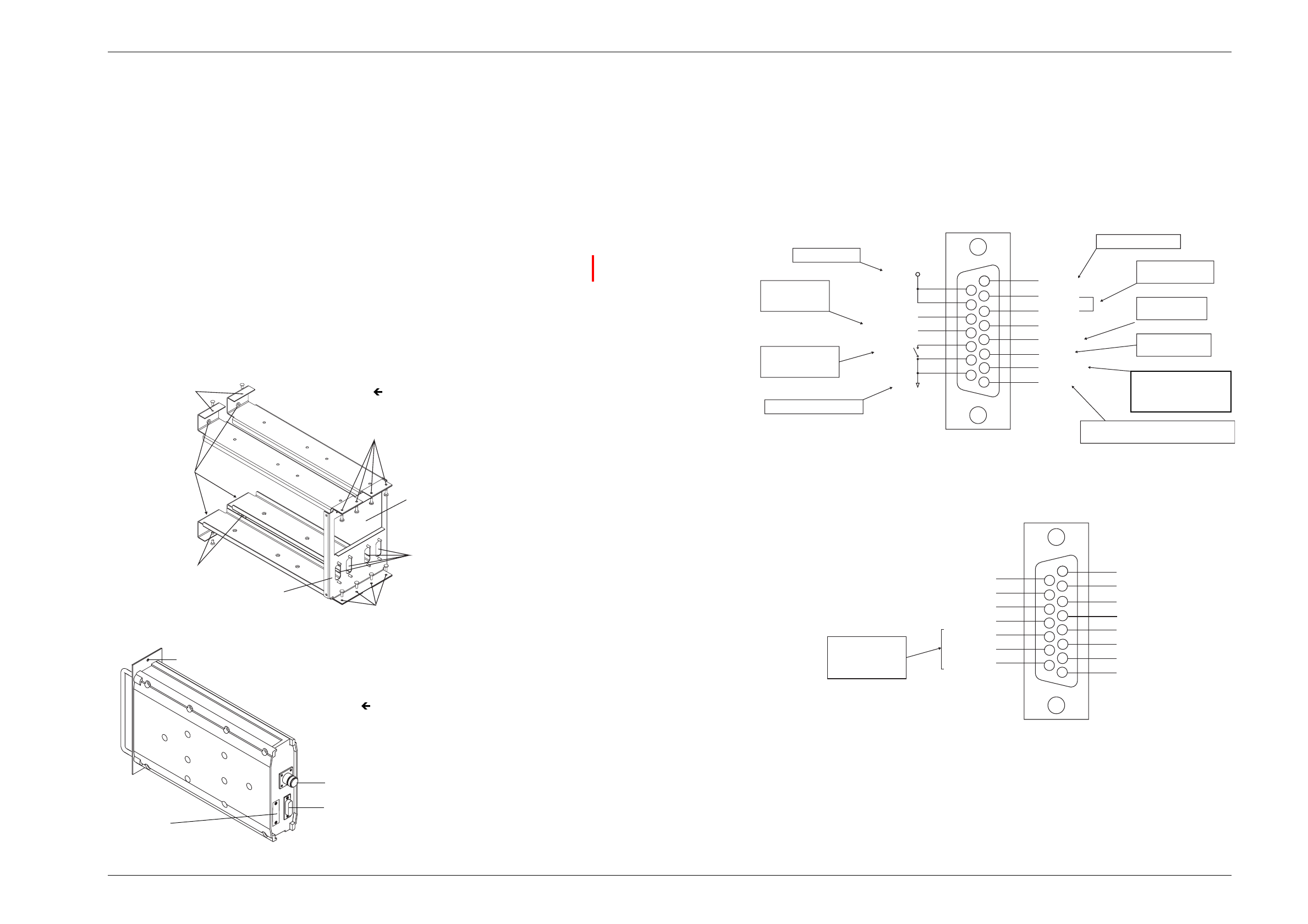Tait TEL0047 One way paging transmitters T836-26-1010 & T836-26 User Manual 8c300 a3 bk
Tait Limited One way paging transmitters T836-26-1010 & T836-26 8c300 a3 bk
Tait >
Contents
- 1. T836 Diagram of units
- 2. Installation Guide
- 3. Manual
Installation Guide

M830-00
T836/837 Installation
F2.1
Copyright TEL 23/07/99
2 T836/837 Installation
2.1 Rack Mounting
The T836 transmitter and T837 exciter are designed for use in a standard 483mm rack
frame using a Tait T800 Series II guide. The guide is securely mounted to the rack frame
with front and rear retaining screws, and the T836/837 is secured into the guide with
two front panel mounting screws. Figure 2.1 shows a standard, double module guide
which can also be fitted with an optional backplane PCB to locate and mate the rear
D-range connector(s). For more information on available guide kits, refer to the T800
Ancillary Equipment Service Manual or your nearest Tait Dealer or Customer Service
Organisation.
A rear mounted N-type connector is used for RF output on the T836/837, while all DC,
audio and control connections are via the rear mounted D-range connector, D-range 1
(PL100). An additional rear D-range connector (T800-03-0000) can be fitted when
remote multichannel operation, or additional control or low frequency lines are
required (refer to Figure 2.2).
2.2 Rack Wiring
The D-range input and output connections are shown in Figure 2.3 and Figure 2.4.
Ensure that the cables are not subjected to any stresses due to tight bends or incorrect
lengths.
Make sure the RF coax cable to the N-type connector is free from sharp bends or twists.
If access to the rear of the rack frame is restricted, the cable should be long enough to
allow the chassis to be fully withdrawn from the guide.
Figure 2.3 T836/837 D-Range 1 Wiring - Rear View
Figure 2.4 T836/837 D-Range 2 Wiring - Rear View
(standard T800-03-0000 kit)
Note:
Figure 2.4 above shows the standard pin allocations for the T800-03-0000
auxiliary D-range kit. A T800-03 auxiliary D-range kit is also available for
special applications requiring custom internal wiring.
Front Panel
Mounting Holes
Rack Mounting Holes
Rack Mounting Holes
Rack Mounting Holes
Slots For D-Range
Connectors
Rack Mounting Holes
Aperture For RF
Connectors
Optional Backplane PCB
Mounts On Rear Of Guide
N-Type Connector
D-Range Plug
(D-Range 1)
Space For Optional
D-Range Plug
(D-Range 2)
Front Panel Mounting Hole
Figure 2.2 T836/837 Chassis Connectors
Figure 2.1 T800-41-0002 Double Guide Kit
1
2
3
4
5
6
7
8
9
10
11
12
13
14
15
External CTCSS input:
1kHz deviation @150Hz (500mV rms)
To key transmitter:
high impedance
<0.7V = key
High isolation
keying option:
6 to 50V DC To key PA, open
collector
Can be configured as
Audio 1 by internal
link resistors if required
Short together for
normal operation
Sensitivity: -30dBm
External/auxiliary
audio processing
Power supply, -ve earth
10.8 to 16V DC
Line I/P1
CTCSS
Serial Com
Audio 2
Tx Enable
Line I/P4
Line I/P3
Line I/P2
Opto Key +
Opto Key -
+13.8V
Gnd
Tx Key
Can be configured as
Audio 1 by internal link
resistors if required.
Refer to Part I.
Open drain type;
capable of sinking
2.25mA via 2k2Ω;
V max. = 5V
ds
1
2
3
4
5
6
7
8
9
10
11
12
13
14
15
CH_SLCT 0
CH_SLCT 1
CH_SLCT 2
CH_SLCT 3
CH_SLCT 4
CH_SLCT 5
CH_SLCT 6
CH_SLCT 7
GND
TX RELAY DRV
CTCSS DISABLE
SERIAL COM
AUX-OUT 0
AUX-OUT 1
AUX-OUT 2

F2.2
T836/837 Installation
M830-00
23/07/99 Copyright TEL
2.3 Power Supply
If a power supply other than an appropriate Tait model is used, ensure that it is capable
of providing enough current to drive the T800 system and is also free from excessive
ripple or noise.
The system should be protected by the use of appropriately rated fuses in the power
supply.
Note:
It is particularly important when the prime power source is a battery that
fuses be employed in all supply lines.
2.4 Reverse Polarity Protection
A crowbar diode is fitted to all T836 transmitters and T837 exciters for protection
against connection to a power supply of incorrect polarity. It also provides overvoltage
protection from voltage transients caused by lightning strikes.
Note:
A fuse must be fitted in the power supply line for the diode to provide effec-
tive protection.